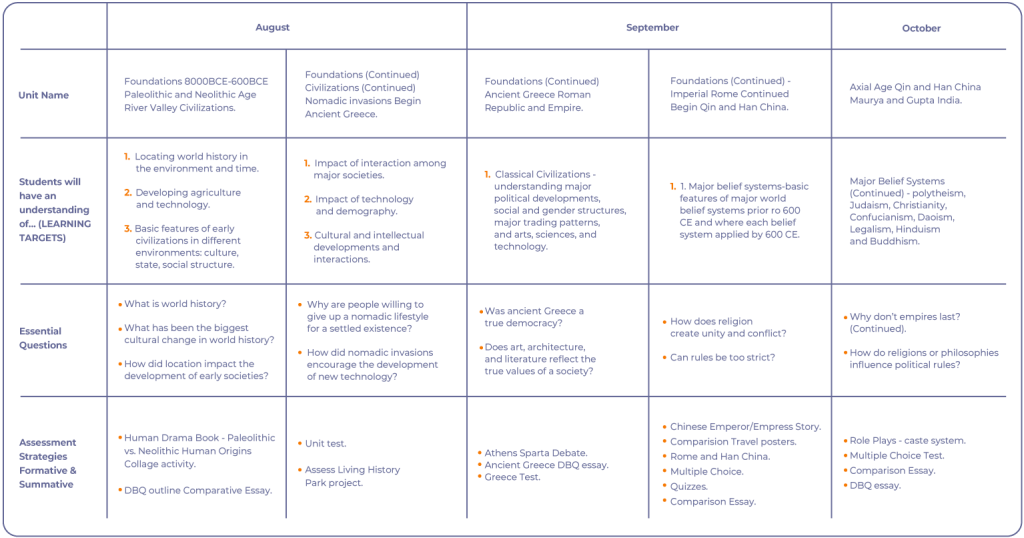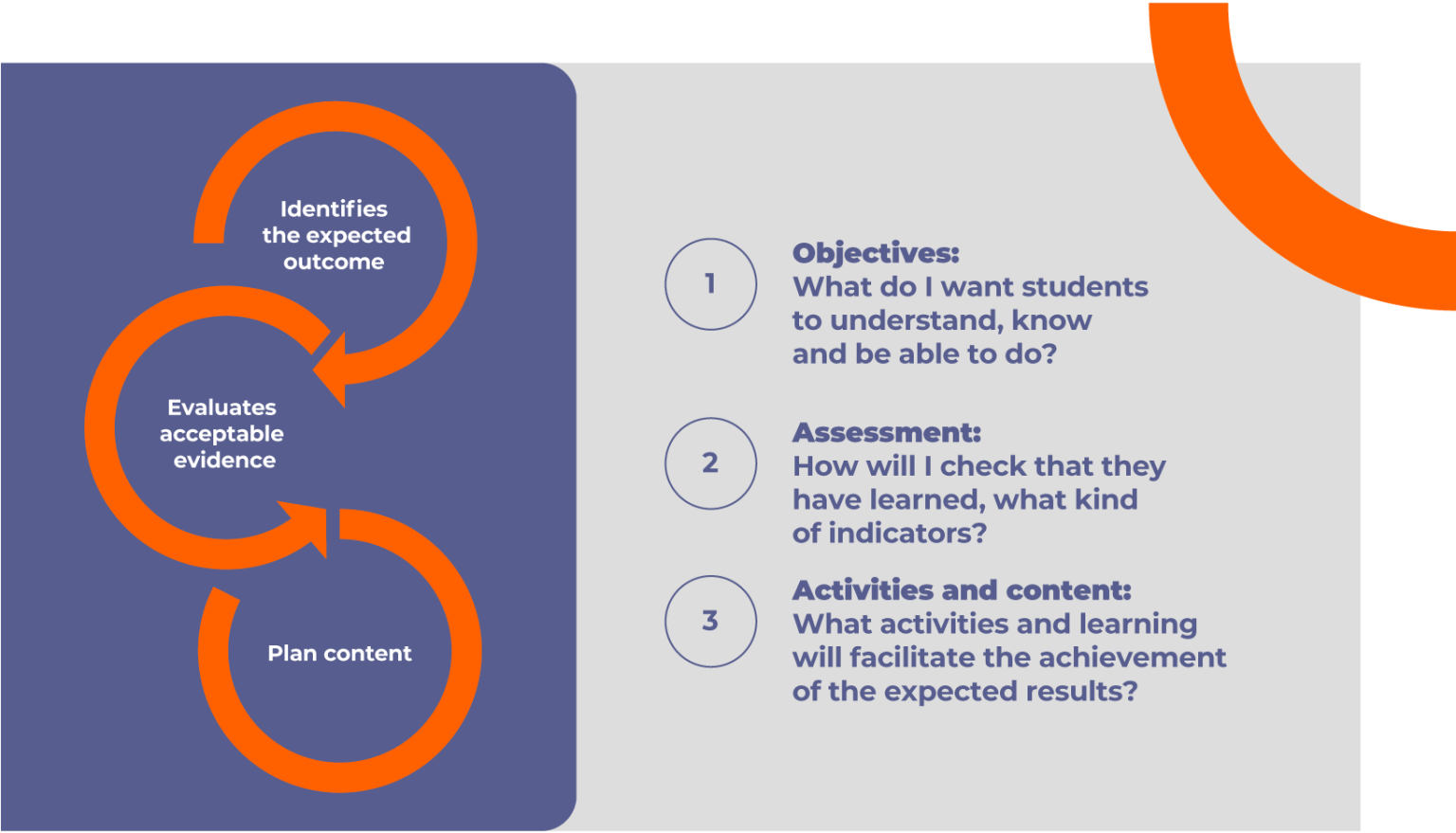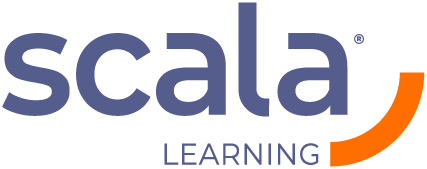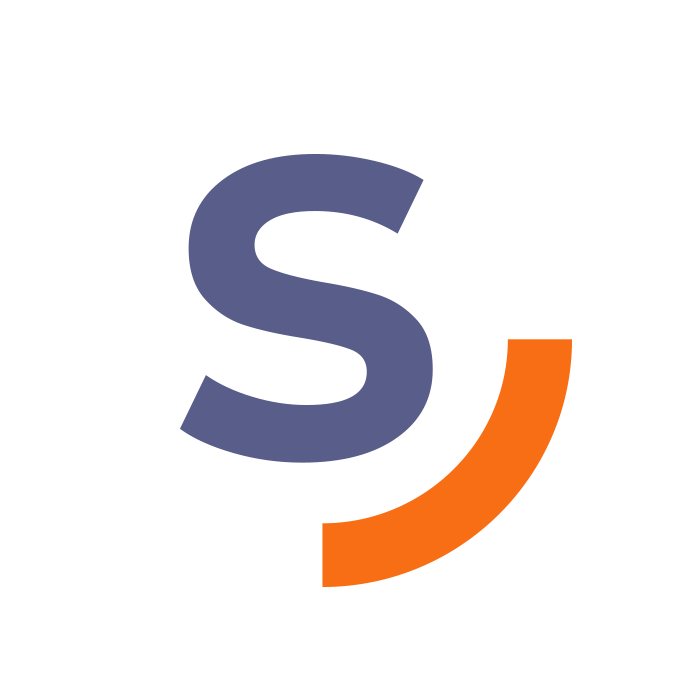Curriculum design is a written plan that describes the activities, standards, and topics to be covered in a specific subject or course. The curriculum design process involves the identification of learning objectives and the creation of an organized sequence of resources to achieve those objectives. Its function is to provide an integrated set of concepts, ideas, methods, and materials for the teaching and learning of a particular subject.
- Curricular design: an educational need
- What is curricular design?
- Educational curricular design features
- Types of curricular design
- Role of curricular design
- Elements of a good curricular design
- Classification of curricular design
- The teacher's role in the curricular design
- How to develop a good curricular design?
- References
What is curricular design?
Curricular design is the process of constructing a plan of study for a specific subject or for education as a whole. It involves the identification of learning objectives and the creation of an organized sequence of resources to achieve those objectives. Although the overall organization and content of a curriculum plan are important, its design can also be influenced by such factors as the developmental level of the learners, the content of the subject matter, the time available for instruction, and the resources available.
Curriculum planning is an interactive process. Initially, teachers may have an idea of what they want to teach and why. However, as they delve into the subject materials they may discover, often unexpectedly, that there are certain points they want to teach that they didn’t realize were essential to the understanding of the subject, so they may revise their plans to be able to include these newly discovered aspects of the subject.
Goals and objectives:
Goals and objectives are at the heart of curricular design; they are the things to be achieved, that is, specific learning that teachers want students to learn; they also provide a guide for selecting and organizing content and activities.
Sequential and logical organization:
A good curricular design follows a logical and organized sequence that includes all necessary topics and skills. Each topic must be clearly related to and integrated with the others.
Consistency and compatibility:
The curricular design must be consistent and compatible with the institution’s goals and objectives. It should be the most effective way to achieve the stated objectives.
Compatibility with student needs and interests:
An appropriate curricular design should be compatible with the needs of students. It should include topics that are relevant to the students.
Clear objectives:
The objectives of the curricular plan should always be clear and precise.
Coherence and consistency:
The goals and objectives in the content of different subjects should always be consistent with each other.
Flexibility:
The curricular design should be flexible enough to adapt to the needs and interests of each student.

Types of curricular design
Primary or sequential curricular design
Recommended for students learning a foreign language, students who haven’t been exposed to the subject area, or students who need a thorough review of the material.
Secondary or integrated curricular design
Recommended for middle school students and those who have had some previous experience in the subject. Integrates the study of language, literature and culture.
Curricular design for higher or parallel education
It is designed for advanced students in a particular subject or for a group of advanced students who wish to study two or more subjects in depth.
Competency-based or specialized design
It is a curriculum plan specifically designed for a particular group of students who, because of their learning characteristics, require some type of special education or instruction in specific skills or subjects.
Role of curricular design
A good curricular design begins with identifying learning objectives.
When teachers are clear about what they want their students to learn, they can create an organized sequence of resources to achieve those goals.
Create an Organized Sequence of Resources.
Once teachers have identified learning objectives, they create an organized sequence of resources to meet those objectives.
Provide guidelines for resource selection.
A good curricular design provides guidelines for selecting and organizing the resources in the subject area.
Provide a framework for lesson planning.
It also serves as a reference for assessing learning.
It is based on sound educational theory and research.
Elements of a good curricular design
Classification of curricular design
- Chronological: The chronological or historical approach organizes the program by date or period.
- Cyclical: The cyclical approach organizes the program by cycles, units, or themes that are related to each other.
- Problem-solving: The problem-solving approach organizes the curriculum around solving real-world problems.
- Cultural: The cultural approach organizes the curriculum around the cultures of the world.
- Thematic: The thematic approach organizes the program by topic.
- Humanistic: The humanistic approach organizes the curriculum so that students can develop their full potential as individuals.
- Structural: The structural approach organizes the curriculum around concepts and ideas.
- Sequential: The sequential approach organizes the curriculum according to chronological order.
The teacher's role in the curricular design
The teacher is responsible for identifying the learning objectives because if they are clear and precise, the selection of appropriate materials will be easier. The next step is to select the most appropriate teaching methods and materials to achieve the learning objectives, and the last step is to organize and sequence the curricular design according to the objectives and methods used.
Additionally, you can always have the support of specialized partners in the elaboration of the curricular design, such as an OPM. If you do not know what it is, we invite you to learn more in the link.

How to develop a good curricular design?
- Identify learning objectives: The first step in designing an educational program for a particular subject is to identify the learning objectives.
- Select the teaching methods and materials: Once learning objectives have been identified, the next step is to select the most appropriate instructional methods and materials to achieve those objectives.
- Organize and sequence the education plan: The final step is to organize and sequence the educational plan according to the objectives and methods used.
- Review the educational plan: Once the curriculum is completed, teachers should review it to see if any modifications are needed.
- Use the educational plan: The next step is to use the educational program to plan and organize the different lessons or units of the subject.
Here is an example of curricular design.

Curricular design is a highly complex activity whose goal is to determine the most effective way to achieve stated goals with the resources available. The design of an educational program should be based on sound educational theory and the results of relevant research. It should include topics appropriate to the developmental level of the students, be consistent with their needs and interests, and reflect their cultural background. Successful curricular design is based on the identification of learning objectives.













